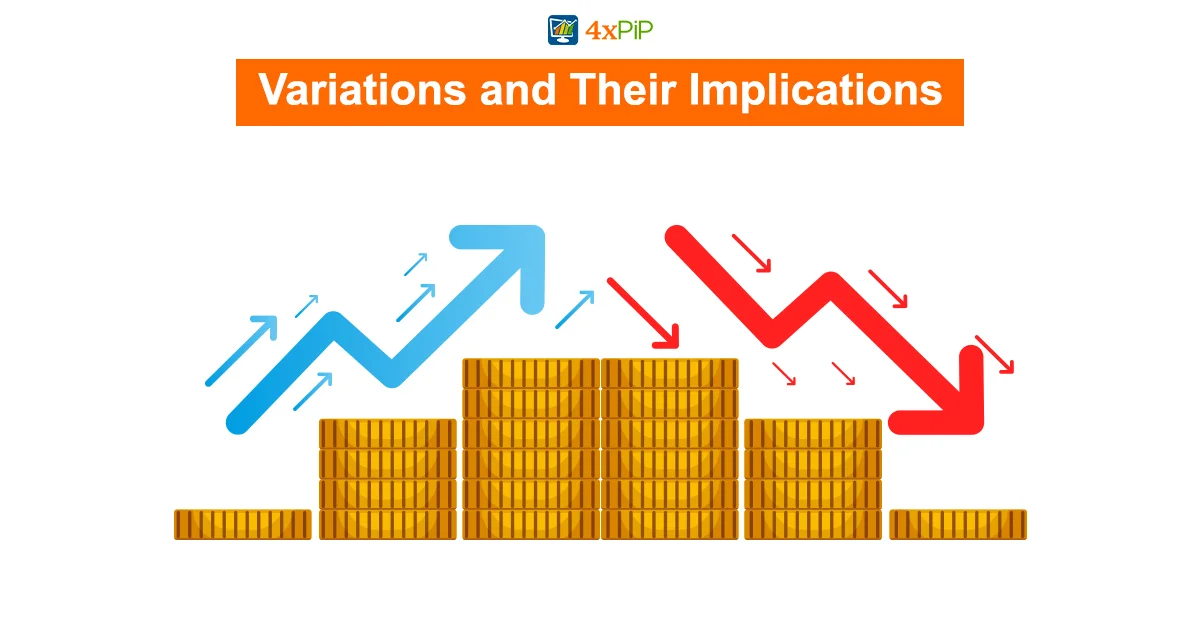Embarking on the dynamic journey of Forex trading, enthusiasts often encounter the Martingale strategy as a captivating yet cautionary approach. In the company of 4XPip, a beacon in the Forex landscape, we’ll navigate through the intricacies of this strategy. Originating in 18th-century casinos, the Martingale strategy allures traders with promises of swift deposit growth. Our exploration aims to unravel the layers of this strategy, examining its advantages, downsides, and its compatibility with diverse trading styles.
Understanding the Martingale Strategy
At its essence, the Martingale strategy beckons traders with the promise of exponential growth, urging them to double their position size following each loss in anticipation of an eventual profit that would offset previous setbacks. Regarded by some as the holy grail of trading, this approach seems straightforward in its reliance on probability theory. However, beneath the surface lies a perilous truth – the strategy’s seeming infallibility crumbles in the face of extended losing streaks, where consecutive losses can rapidly diminish a substantial portion of the trader’s deposit.
Despite its inherent risks, the Martingale strategy has a historical connection to casinos and gambling, dating back to the 18th century. Originating from games of chance, the strategy involves a player doubling their bet after each loss, counting on the odds to eventually favor a win. Translated into the realm of Forex trading, this approach entails opening a larger position following each unsuccessful trade, with the hope that subsequent victories will not only recoup losses but also generate profits. However, the allure of this seemingly foolproof strategy often blinds traders to the statistical realities, leading to substantial risks and potential pitfalls.
Variations and Their Implications

The Martingale strategy, a popular yet risky approach, unveils its adaptability through variations like pyramiding and reversing. In pyramiding, traders escalate their position sizes along with positive trends, aiming for accelerated deposit growth. This method allows for capitalizing on favorable market movements, making it a tempting option for those seeking quick returns. However, this strategy requires careful risk management, as the compounding effect can lead to substantial losses if trends reverse unexpectedly.
On the flip side, reversing introduces a unique twist to the Martingale strategy. Instead of merely doubling the position size after a loss, it involves opening a position in the opposite direction. This variation seeks to capitalize on market reversals, turning a losing streak into potential gains. Traders need to exercise caution, though, as both pyramiding and reversing amplify the inherent risks of the Martingale approach. While they offer tactical flexibility, meticulous planning and a thorough understanding of market conditions are essential to navigate the complexities of these variations successfully.
The Risks and Rewards
The peril inherent in the Martingale strategy becomes apparent as it hinges on probability theory. A step-by-step demonstration with a hypothetical $100 deposit vividly illustrates the scenario: after just six consecutive losses, the capital dwindles by two-thirds. This exemplifies the critical importance of implementing the Martingale cautiously, as its reliance on geometric progression can lead to significant drawdowns.
Despite the dangers, the allure of the Martingale lies in its potential to rapidly amplify a deposit. The strategy seems enticing, suggesting that by consistently increasing position volumes after losses, eventual profits will compensate for earlier setbacks. However, this apparent simplicity masks the underlying risks, as the strategy’s effectiveness demands a deep understanding of mathematics and statistics, making it a precarious choice for novice traders.
For further guidance and information, you can contact 4xPip experts and advisors on [email protected] for better understanding.
Martingale in the Forex Market
In the realm of Forex trading, the application of the Martingale strategy introduces a crucial shift from its traditional use in the gaming world. Here, the transaction volumes are quantified in lots rather than specific amounts, and finding the optimal balance between increasing position volume, determining take-profit levels, and setting stop-loss parameters becomes a nuanced challenge. The depth of drawdowns in Forex emerges as a significant hurdle, intricately tied to the cost of a pip. For instance, if a trader’s deposit can withstand a 300 pip drawdown, the increase in position volume by a factor of 10 must be approached strategically. This amplified risk is a critical consideration, as it not only impacts potential losses but also necessitates careful evaluation of risk management practices.
In the Forex landscape, the cost of a pip dynamically fluctuates with the rise in position volume, underscoring the need for meticulous risk assessment. Imagine a scenario where a trader’s deposit, allowing for a 300 pip drawdown, experiences a tenfold increase in position volume over four trades (0.1 lot, 0.2 lot, 0.4 lot, 0.8 lot). While this example simplifies the calculations, it highlights a critical aspect: the permissible drawdown diminishes to 30 pips, not accounting for the reduction in the deposit due to losses in the initial positions. The Martingale strategy’s application in Forex, therefore, necessitates a delicate equilibrium, aligning the increase in position volume with risk management parameters, all within the context of the market’s ever-shifting dynamics.
Simple vs. Complicated Martingale

In its simplest form, the Martingale strategy is a bold approach to trading, where traders double their position size after each loss, with the anticipation that eventual wins will recover all previous losses. However, this seemingly straightforward tactic is not without risks. Novice traders often fall into the trap of relying solely on probability theory, assuming a 50/50 chance of success. The stark reality is that a series of consecutive losses can lead to significant drawdowns, eroding a substantial portion of the trading capital.
Moving beyond the basic Martingale, the strategy’s complexity deepens with a more intricate approach. Traders delve into mathematical calculations, carefully considering variables such as the initial deposit, desired risk levels, and market analysis. This sophisticated Martingale variant aims to strike a delicate balance between position volume, take-profit levels, and stop-loss settings. Successful implementation demands a thorough understanding of the strategy’s nuances and a nuanced risk management plan to navigate the potential pitfalls effectively.
Suitability and Caution
The Martingale strategy, often hailed as the “Grail” for those craving swift deposit growth, originated in the world of casinos and gambling during the 18th century. Its fundamental premise involves doubling the bet after each loss, aiming to recover all losses with a subsequent win. This approach, while seemingly logical, is inherently deceptive, relying on a 50/50 probability theory that doesn’t account for the harsh reality of financial markets.
In the realm of Forex trading, the Martingale system is transposed into opening doubled-up positions after a loss until a profitable outcome is achieved. The allure lies in the potential for rapid deposit expansion, but the risks are stark. A series of consecutive losses can lead to significant drawdowns, necessitating a substantial initial capital and the temptation to abandon risk management principles. Despite its pitfalls, the Martingale strategy finds application among gamblers-turned-traders and professionals when wielded judiciously in conjunction with robust risk mitigation measures. However, for novices and those averse to risk, a cautious approach is recommended, steering clear of this high-stakes strategy.
Risk Reduction and Safe Practices
Mitigating the risks associated with the Martingale strategy demands a careful approach and adherence to specific guidelines. To begin with, it’s essential to avoid applying the Martingale in flat trends, where its effectiveness diminishes. Instead, it makes more sense to implement the strategy when there’s a clear indication of an upward or downward trend, providing a favorable environment for position volume adjustments.
Furthermore, starting with a minimum lot is a prudent move, especially for novice traders or those experimenting with the Martingale strategy. This cautious approach allows for a gradual understanding of the strategy’s dynamics without exposing the trader to significant risks right from the start. Additionally, strictly adhering to risk management principles is paramount. This involves considering the risk per trade and the total number of trades, ensuring that the Martingale adjustments align with predetermined risk limits to prevent substantial losses.
Incorporating technical and fundamental analyses becomes imperative when using the Martingale strategy. Relying solely on the strategy without a solid foundation in market analysis is risky. By integrating these analyses, traders can make informed decisions and increase the probability of successful outcomes. Another key aspect is the gradual increase in position volumes. Instead of doubling up positions abruptly, a smoother transition, such as incremental increases, can help in maintaining better control over the associated risks. This measured approach aligns with responsible trading practices and contributes to the overall effectiveness of the Martingale strategy.
Algorithmic Trading with Martingale
While many caution against Martingale as a direct path to deposit loss, algorithmic trading introduces a nuanced perspective. Trading advisors incorporating Martingale elements necessitate constant supervision. Recommendations include manual position closures, thorough testing, cautious trend-following, and prudent use of cent accounts for minimal losses during testing phases.
Broker Recommendations
Selecting the right broker plays a pivotal role in the Martingale strategy’s success. eToro and RoboForex stand out as reputable choices, offering diverse tools, regulatory adherence, and robust platforms. For traders embracing Martingale, these brokers provide essential features for an optimal trading experience.
Conclusion
In conclusion, the Martingale strategy is a double-edged sword in Forex trading. Its potential for rapid deposit growth is counterbalanced by substantial risks. A cautious, well-informed approach, supported by thorough risk management, technical analysis, and prudent broker selection, can tip the scales in favor of the astute trader. Whether to embrace or shun the Martingale strategy boils down to an individual trader’s risk tolerance, expertise, and willingness to navigate the intricate mathematical terrain of probability theory.








